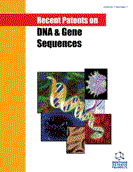Abstract
STR genotyping from degraded DNA samples requires genetic profiles to be obtained from DNA fragments no bigger than 200-300 bp. It requires the use of miniSTRs, which are smaller than the STRs used in standard typing. This paper reviews recent advances in miniSTR genotyping, beginning with a brief introduction to the processes involved in DNA fragmentation and how it hinders standard STR genotyping before proceeding further to the loci included in the main DNA databases and finishing with the International Workgroups' recommended design strategies for developing miniSTR reactions. The results of the efforts of many laboratories achieving different STR multiplexes and patents are also described and compared. Finally, a consideration of the perspectives for the future in this area is presented.
Keywords: CODIS, degraded DNA, DNA typing, ESS, forensic science, ISSL, mini and midi short tandem repeat, multiplex, patent, STR, patent, STR, Polymerase Chain Reaction, miniSTR genotyping, DNA fragments, multiplex combinations, miniSTR typing, SGM and Identifiler
 5
5

